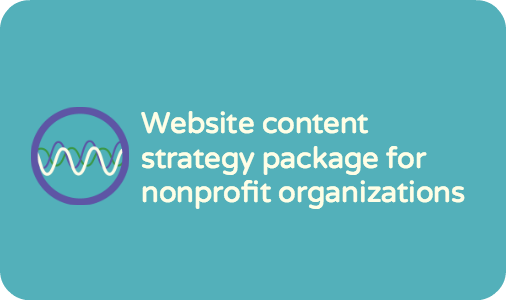I feel that mission statements are frequently abused by non-profits. Given all of the heavy lifting we expect of mission statements, I think it’s a mistake to also expect them to serve as effective marketing messages – taglines in particular. To help make my point, I invited mission statement expert, Sam Frank, Principal at Synthesis Partnership,to weigh in on the matter. I ended up getting more of a debate than I expected. In part one of this post, Sam describes what mission statements are and why they are important. In part two – coming tomorrow – we will agree to disagree.
Mission Statement Primer – by Sam Frank
Often when the question of the mission statement comes up with a nonprofit board there are groans.
- We don’t want to get bogged down in wordsmithing; we have more important issues to deal with.
- We all know why we’re here, let’s figure out how to do our work better.
- We worked on that two years ago and gave up because it was a pointless waste of time. Why should we get into that again?
So what is the point of a mission statement? Is it just something you’re supposed to have somewhere for appearance sake and move on to more important things? Or is it worth time and effort to re-examine and craft it to serve a clear purpose?
Here’s my claim: a mission statement is a fundamental tool of strategy, focus, marketing, and identity. It provides the shortest route to your goal… for the simple reason that without it you don’t really know (collectively) what your goal is.
Your mission is the reason you exist. If your organization is to be as effective as possible, its reason/mission needs to be shared by those who govern, manage, work within, volunteer for, and otherwise have a stake in your organization. Unless you express the mission clearly there is no way that everyone involved will have the same understanding of it and be able to work most effectively toward it. Thus the mission statement. The job of the mission statement is to articulate the essence of why the organization exists. If you don’t articulate it, then it’s very likely that there isn’t an essence at all, just a cloud of assumedly similar individual understandings.
So when people advocate working on the mission statement, what they mean is: let’s sharpen what we say about our purpose so that we can work more effectively together to achieve it, and draw more people into our fold to support it.
Once you have the statement it will remind you what is most important and distinctive about your organization. It will help all stakeholders to be clear about the organization they’re involved in, and stay focused. It will help them avoid disappointment that the organization is not doing things they value individually, but are outside the purview of this organization.
Links
For more on mission statements see:
About Sam
Sam Frank, Principal, Synthesis Partnership, advising nonprofits in strategy, planning and organizational development, and Director, Nonprofit Webinars, offering free professional development for nonprofit trustees and staff.


